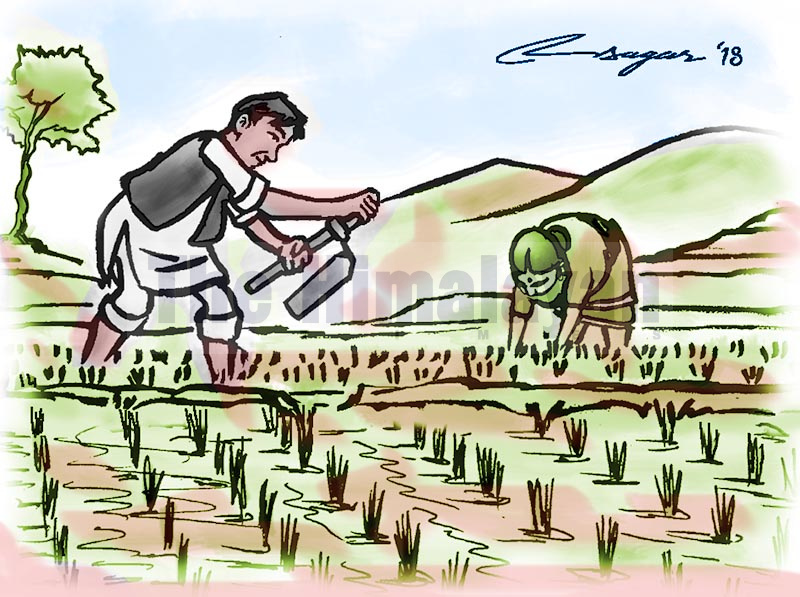Agriculture: Can it provide relief to returnee migrants and vulnerable populations?
Ram Bahadur Pariyar from Kaski district recently returned from Qatar after losing his job and plans to return to agriculture. “I will grow ginger and turmeric on my farm, they don’t go bad easily, and the market value is good,” he said.
The COVID-19 pandemic and ensuing global recession threaten the living standards, and especially food security, of Nepali families that are dependent on remittances from migration. Already, around 16 per cent of Nepal’s population is food insecure, and about 37 per cent of the children below five years suffer from chronic malnutrition. Can timely investments in agriculture support vulnerable households in Nepal?
Remittances from migration are especially important for households from the lower socio-economic groups. Millions of Nepalis abroad will likely return soon. Domestically, about two million migrants have already returned to their villages from urban and peri-urban areas. The economic downturn in Nepal and abroad will make it difficult to find jobs domestically and internationally, at least for the next couple of years.
Behind the looming crisis, however, there may be an opportunity to support vulnerable populations by expediting programmes in agriculture that are currently being coordinated in Nepal. Key elements include reforming access to land, credit, irrigation, fertilisers, agricultural markets and extension services.
Identifying returnee migrants and other vulnerable people by skills, ethnic and economic status, and access to land can improve targeting of interventions. Nepal’s newly adopted governance structure, with the federal and provincial governments supporting local governments (palikas) in programme implementations, is conducive for this approach. Returnee migrants and other vulnerable people can be handed out distinct benefit cards that show their vulnerability and eligibility for different levels of public support.
Coordinated access to farm inputs such as land, irrigation, seeds, fertiliser and credit needs to be strengthened. Landless and vulnerable households, female-headed households and households with lower socioeconomic status, in particular, can be provided priority access to currently underutilised public land, with local palikas serving as a guarantor.
Small solar irrigation pumps, which are gaining popularity in Nepal, can be expanded, while large community pumps can be deployed in areas with highly fragmented land-holdings. Subsidies on seeds, fertilisers and credit can be provided for a limited duration, but should be replaced over the longer term by local production of agricultural inputs and local credit facilities, with the palikas serving as a guarantor.
With many communities remotely located, developing agricultural extension services, especially cell phone-based advisory services, such as text messages or phone calls, can be particularly helpful, even beyond pandemics.
To avoid food losses due to transportation bottlenecks created by the nationwide lockdown, palikas can buy farm products and employ returnee migrants to sell them. In the long run, processing and cold storage facilities in each palika would be important for adding value and increasing local employment.
Agriculture can be a viable livelihood option for returnee migrants and vulnerable populations through well-designed targeted policy support that provides access to land, water, inputs, credits, markets and advisory services. Local governments are better placed to identify vulnerable individuals, and design and implement these programmes in their jurisdictions; and they should be supported in these efforts.
Kafle and Buisson are economists at the International Water Management Institute – a research institute headquartered in Colombo, Sri Lanka.






